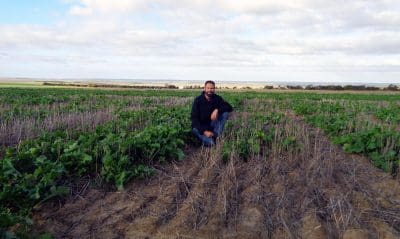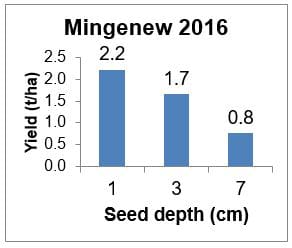WESTERN Australian trials have revealed shallow sowing canola improves crop establishment and yields.
Department of Agriculture and Food (DAFWA) development officer Jackie Bucat said recent work through the Tactical Break Crop Agronomy project evaluated the value of chasing moisture in a drying topsoil by deeper sowing canola.
“Trials at Eradu, Mingenew, Merredin and Dalwallinu last season compared a range of sowing depths,” Ms Bucat said.
“The results were very clear. Even when sowing in April, into drying soil, the establishment of canola was better at one centimetre depth, compared to 3cm or 7cm.”
Ms Bucat said sowing at 3cm resulted in an average yield loss of 19 per cent, when compared with sowing depths of 1cm.
“There were further losses with very deep sowing at 7cm, with an average reduction of nearly one tonne/hectare,” she said.
Ms Bucat expected the yield loss results to apply over the agricultural region, including southern areas.
A range of seed sizes were used in the trials and losses were sometimes exacerbated where small canola seed was used.
“In the 2016 Mingenew trial, using small seed (370,000 seeds/kg) from open pollinated (OP) varieties reduced establishment, yield and gross margin compared with larger OP seed (230 000 seeds/kg).
“There was a similar effect at the Eradu trial, but only where seed was sown deep.
“Hybrid varieties’ seed establishment was better than OP. This has also been reported in other trials, and has been attributed to the larger seed size of the hybrid.”
The work was done by department research officers Martin Harries, Dr Bob French and Sally Sprigg, as part of the department’s Tactical Break Crop Agronomy project, supported by the Grains Research and Development Corporation.
Ms Bucat said seeding and emergence was the most vulnerable stage for canola.
“It is important to get the right depth, seed quality and seeding rate,” she said. “Check your seed depth, make sure to get a germination test for any retained seed and calculate your best seeding rate.”
The canola seeding rate calculator is available from the department website along with more information to optimise canola seeding rates.
Source: DAFWA





HAVE YOUR SAY